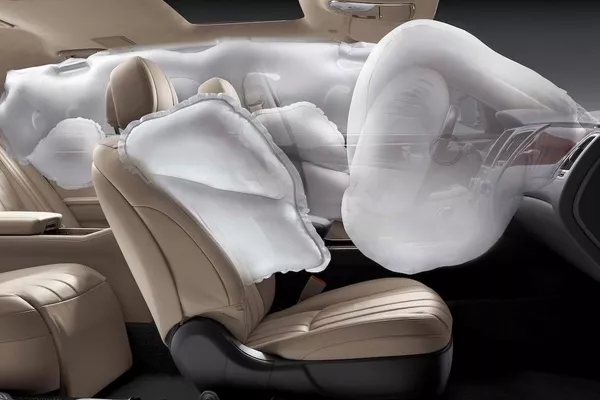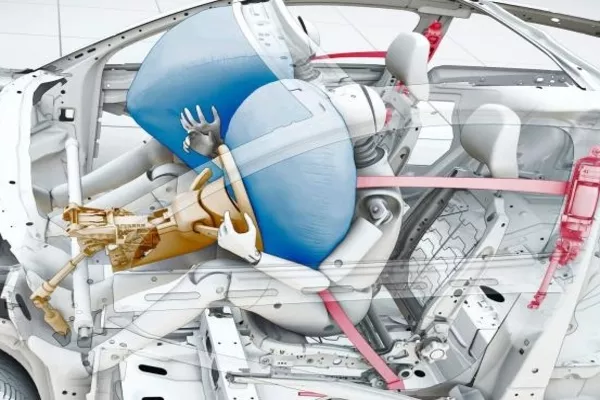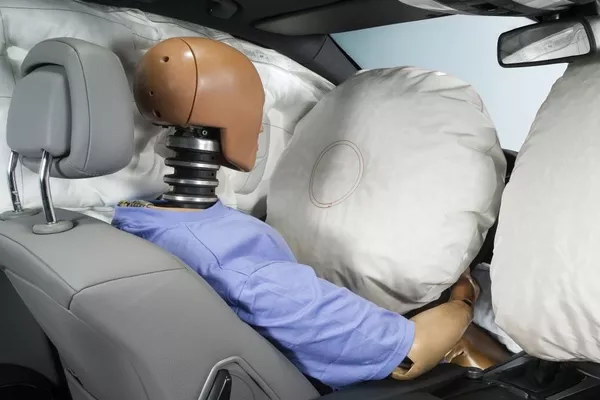Today, we have our so-called “smart cars” that are noticeably packed with revolutionary features. Some of the capabilities that make them “smart” have actually been invented decades ago. Individually, they weren’t gaining too much attention. But when used with other smart features, these innovative capabilities can make one’s riding experience safer, more convenient, and even more comfortable.
One of these innovative features is what today’s experts are calling “smart airbags.” What are these smart airbags and how do they differ from the regular ones? Is there anything special about them? Do they operate differently from regular airbag systems? Know more all about it in this article from Philkotse.com:
1. What are airbags?
Airbags are passive mechanisms that activate anytime a vehicle senses that there’s a collision. Seatbelts, on the other hand, only work if the passenger and driver buckle up. Airbags activate at the perfect time they are needed. All the newest vehicles come with classic airbags. There are still manufacturers though, who like to take it to the next level.

Airbags are passive mechanisms that activate anytime a vehicle senses that there’s a collision
>>> Tips for you: [Philkotse guide] 5 easy steps on do-it-yourself airbags installation.
2. How do airbags work?
Most airbag systems usually use multiple sensors and a control module. The sensors are located in areas that will most likely receive damage when an accident happens. Other data from sensors of the car are also received by the control unit. These can include the wheel-speed sensors, accelerometers, as well as other sources.
If applicable conditions are detected, your vehicle’s control unit will deploy the airbag.
Each airbag is deflated at first -- packed into a small compartment somewhere in the front area of your car. This could be the steering wheel of your vehicle, your seat, the dash or whatever the manufacturer thinks best. They contain initiator devices and chemical propellants. These chemical propellants are ignited by the initiator devices.

Most airbag systems usually use multiple sensors and a control module
Whenever predetermined conditions are detected by your vehicle’s control units, it will send a signal to the initiator device or devices. The chemical propellants will then be ignited. Nitrogen gas will then rapidly fill up the airbags.
If you’ve already seen an airbag in action, you know this process happens really quickly. An airbag can fully inflate in a mere 30 milliseconds. Once an airbag is deployed in a collision, it needs to be removed and replaced.
Airbags are crucial to safety. That’s why replacements should only be done by a licensed professional. You can also have it replaced at the dealership you got your car from.
>>> Check out: Safety first: Top 5 symptoms of falling airbag sensors.
3. Smart airbags
Smart airbags can be traced back to 1994. This was when the NHTSA’s airbag mandate went into effect. At that time, there was a drastic rise in the installation of the feature. This resulted in airbag-related injuries and deaths. Their response was an immediate education campaign focused on public safety.
This highlighted the importance of keeping child passengers buckled up in the back seat. This was also when they noticed that most victims of accidents were kids and smaller adults.

Smart airbags can be traced back to 1994
>>> Make sure you know: Airbags – Things you might not know.
4. What makes smart airbags smart?
The smart airbag system uses a few other extra sensors in determining whether the airbag should really be deployed or not. Smart airbag systems can vary from one type to another. But one of the most basic forms is usually some kind of weight sensors embedded in the car.
This is commonly located in the front passenger seat. If the front passenger is below the manufacturer’s set threshold, the smart airbag will shut off. This can also be referred to as a seat occupancy detector by some. This is also the same system that is used to trip the seat belt warning alarm or light indicator.
>>> Read more: Seatbelts and Airbags: The ins and outs.

There are various smart airbag systems
Other more complicated smart airbag systems can include complex sensors. These can vary depending on which sensor the manufacturer thinks best for their customers. Some of these can even determine which seat the passenger is sitting on. Ultrasonic sensors are usually the types of sensors used for this.
They can shut the system down if the passenger is sitting too close to the dashboard. There are also other smart airbag systems that can control the force of the airbag. This will then be fitted to the position and weight of the passenger.
5. Smart airbags and injury prevention
Per the NHTSA, smart airbags have effectively reduced the chances of injury to children by about 45 percent. This makes smart airbags one of the most vital car safety technologies dedicated for kids. The same study from NHTSA proved there are no increased risks for adults who use airbags.

Per the NHTSA, smart airbags have effectively reduced the chances of injury to children by about 45 percent
So it’s safe to say that at least on a few pieces of paper, it seems that smart airbags are capable of saving lives.
Unfortunately, smart airbag tech has had tons of problems over the years. Some smart airbag systems fail to activate at the time they are needed the most. This is even if the passenger is heavy enough to turn the sensor on. There are also original equipment manufacturers that had recall issues.
Recent posts
- Early Warning Device for cars: Must-have safety tool for every Pinoy driver Aug 18, 2023
- 14 safety tips when you have to drive in heavy rain Aug 16, 2022
- Unfold 3 popular vehicle safety tests Jun 12, 2019
- A step-by-step guide on how to replace the airbags on your car Mar 10, 2022
- The connection between car airbags & short people and How it can endanger your safety Nov 14, 2017












